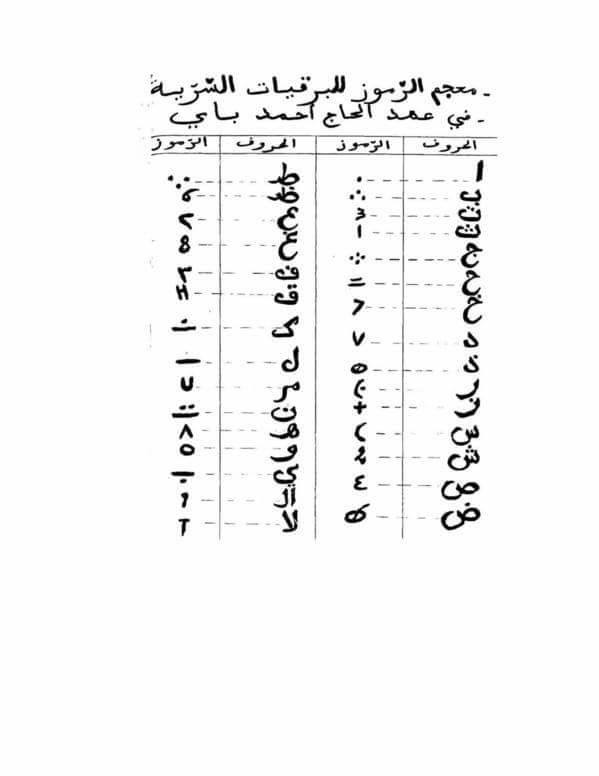The Amazigh symbol in the secret correspondence of Ahmed Bey.

°°°The Amazigh code was present in the secret correspondence of Hajj Ahmed Bey, the ruler of Baylek in eastern Algeria. Abdel Karim Bejaja discovered a document containing a secret code containing 30 symbols that interpreted 28 letters of the Arabic language, which Hajj Ahmed used in his correspondence with Hamdan. Khoja, the owner of the mirror, is one of the influential political figures who used to plead for the Bey in Paris and Istanbul.
°°°The symbols that were used in these secret correspondences, many of which were inspired by the Amazigh Tifanagh script (according to the document), which is evidence that the Baylek of the East (Sirta in ancient times) knew the language in which the ancestors used to communicate, and through this correspondence the colonizer was able to find out the truth. Continued use of the Amazigh script
°°° Bajaja Abdel Karim presents his position on the issue of the script in which the Amazigh language is written, and although it is consistent with the necessity of re-evaluating the Amazigh culture as an urgent national demand, it is not compatible with the proponents of the thesis of using the Latin letter in writing it under the pretext of openness to the outside world, because This argument is weak, It makes us vulnerable to changing our letters for every new cultural gift that triumphs over others. Where is the hint of our identity in that?
In his estimation, there are only two solutions to this dilemma:
1- Use the original alphabet (Tifnagh) and complete the research to avoid any deficiency in it.
2- The use of the Arabic alphabet, as happened during the rule of the Almoravid and Almohad Amazigh states
____________________________________________
Abdel Karim Bejaja, researcher, writer, former Director General of the Algerian National Archives from 1992 to 2001, Governor of the Regional Archives of the State of Constantine from 1974 to 1991. The text is translated from his book: The Battle of Constantine 1936/1937, pages 142, 13.
[2] See on this subject: Carette (M.E.) “Algérie” published in 1848, republished by Bouslama, Tunis, 1980; refer to pages 94 - 95 and 96, where the events of the “discovery” of the ancient Libyan alphabet in 1631, in 1822, and at the beginning of the colonial period are described.
[3] Carette had noted in the 1840s that the Arabic alphabet was also used for writing Berber, instead of the original Amazigh alphabet
Tayeb Ait Hamouda

